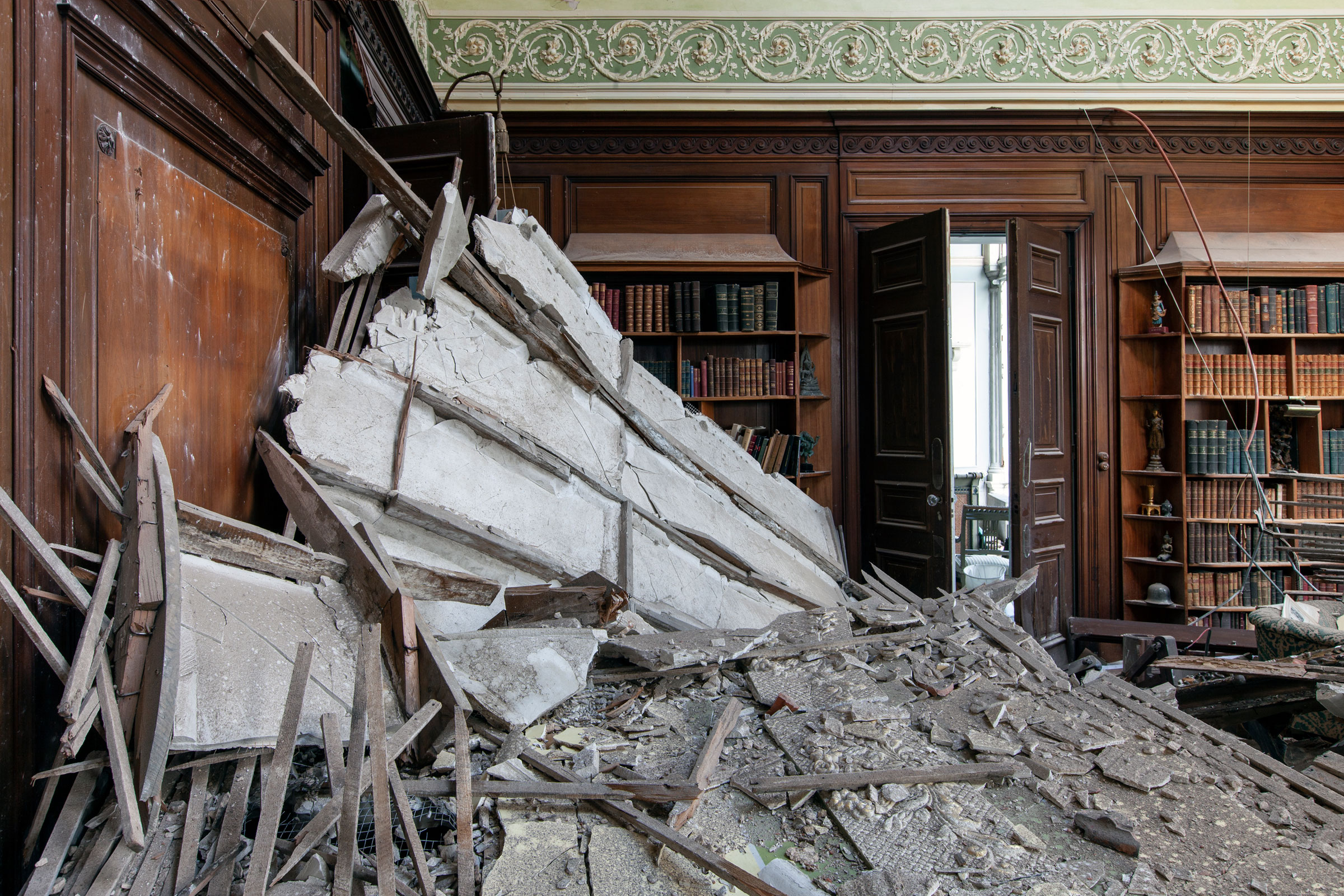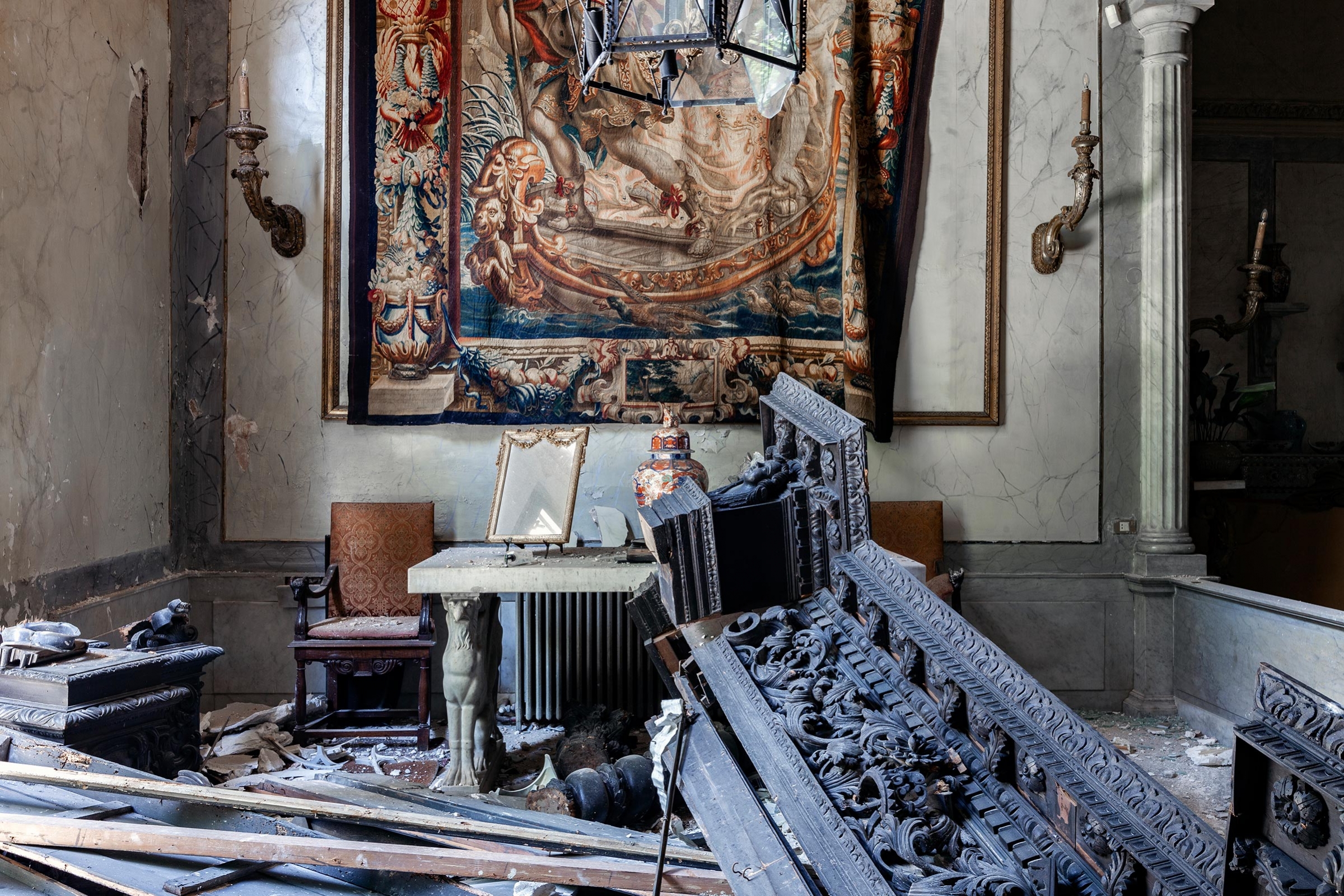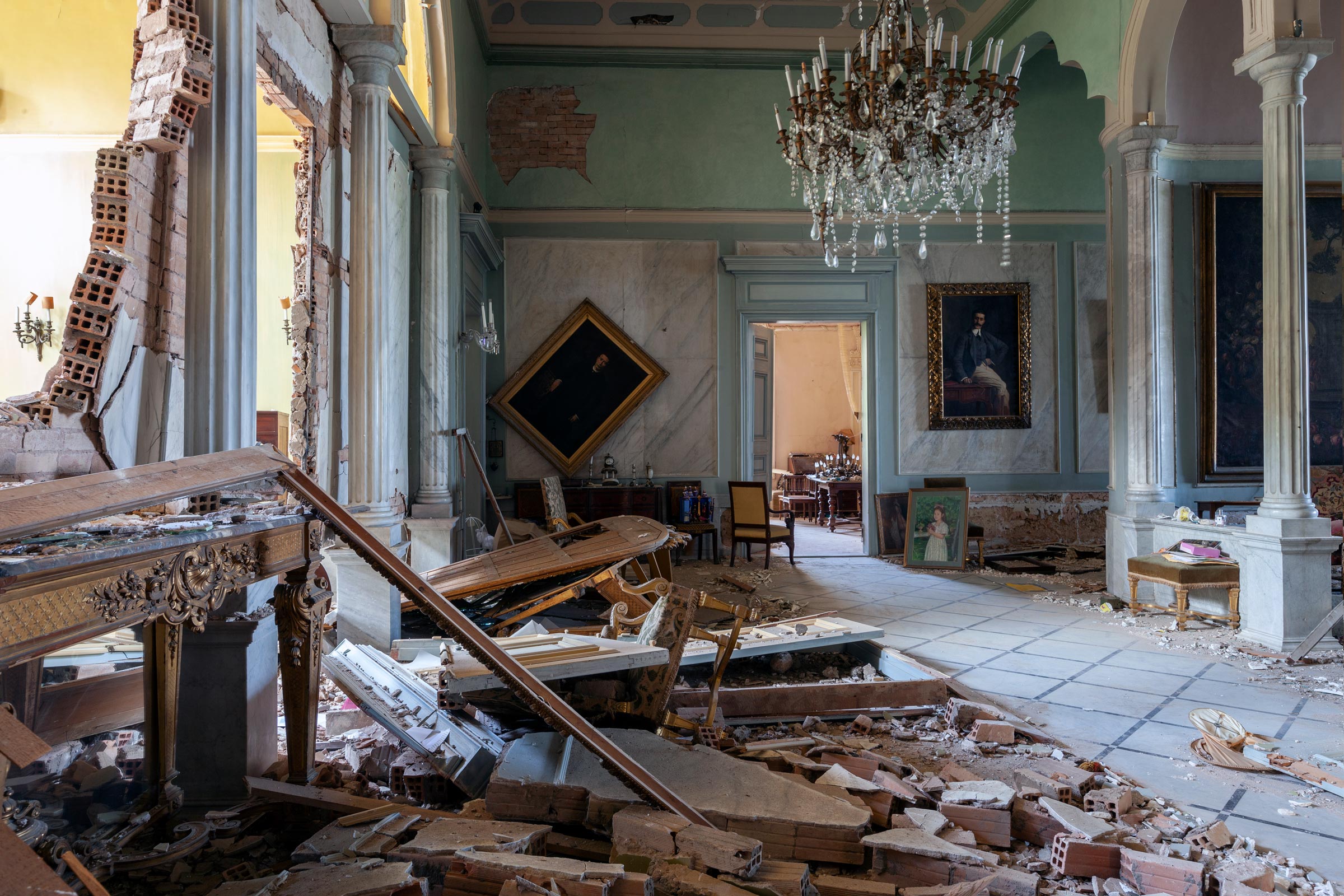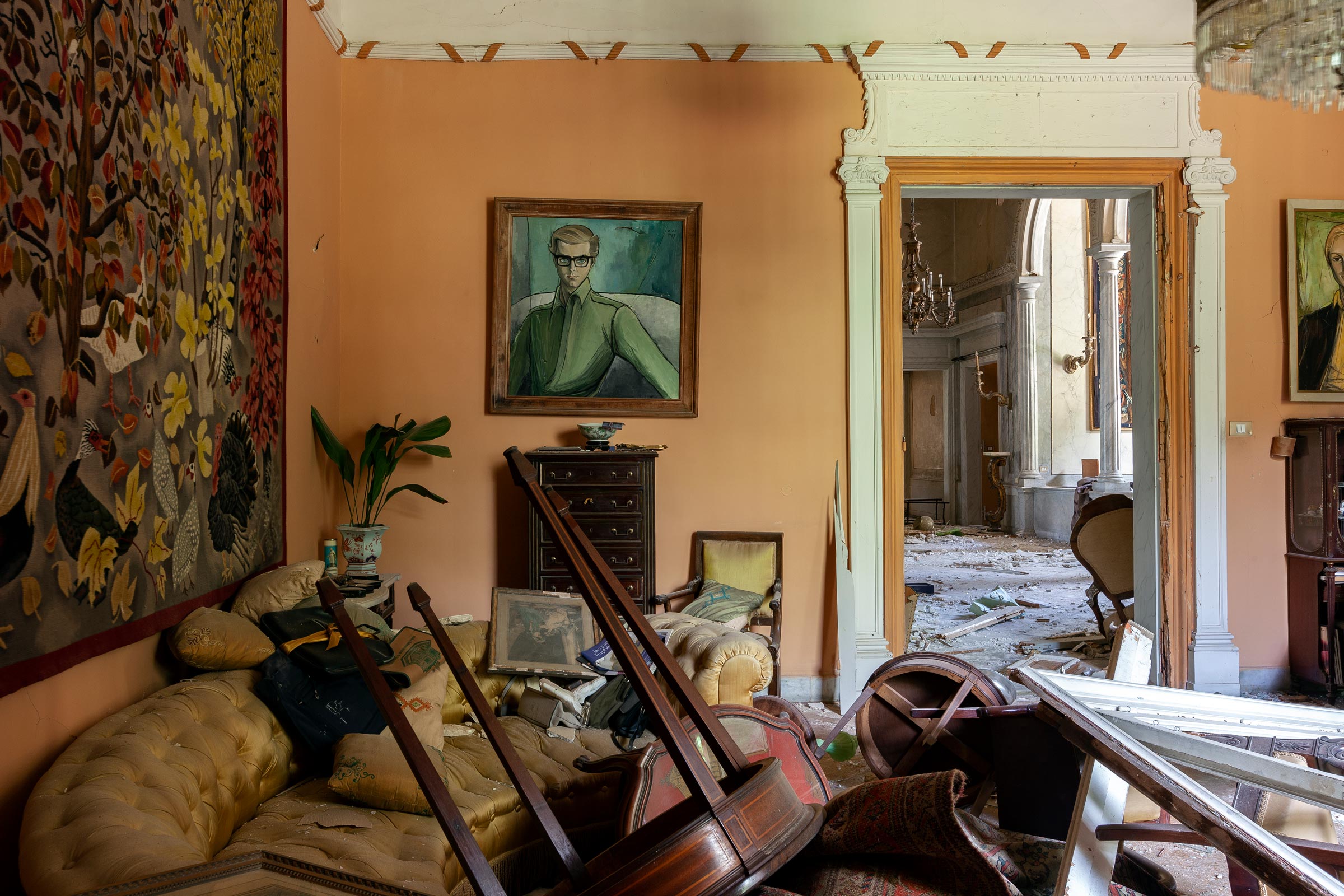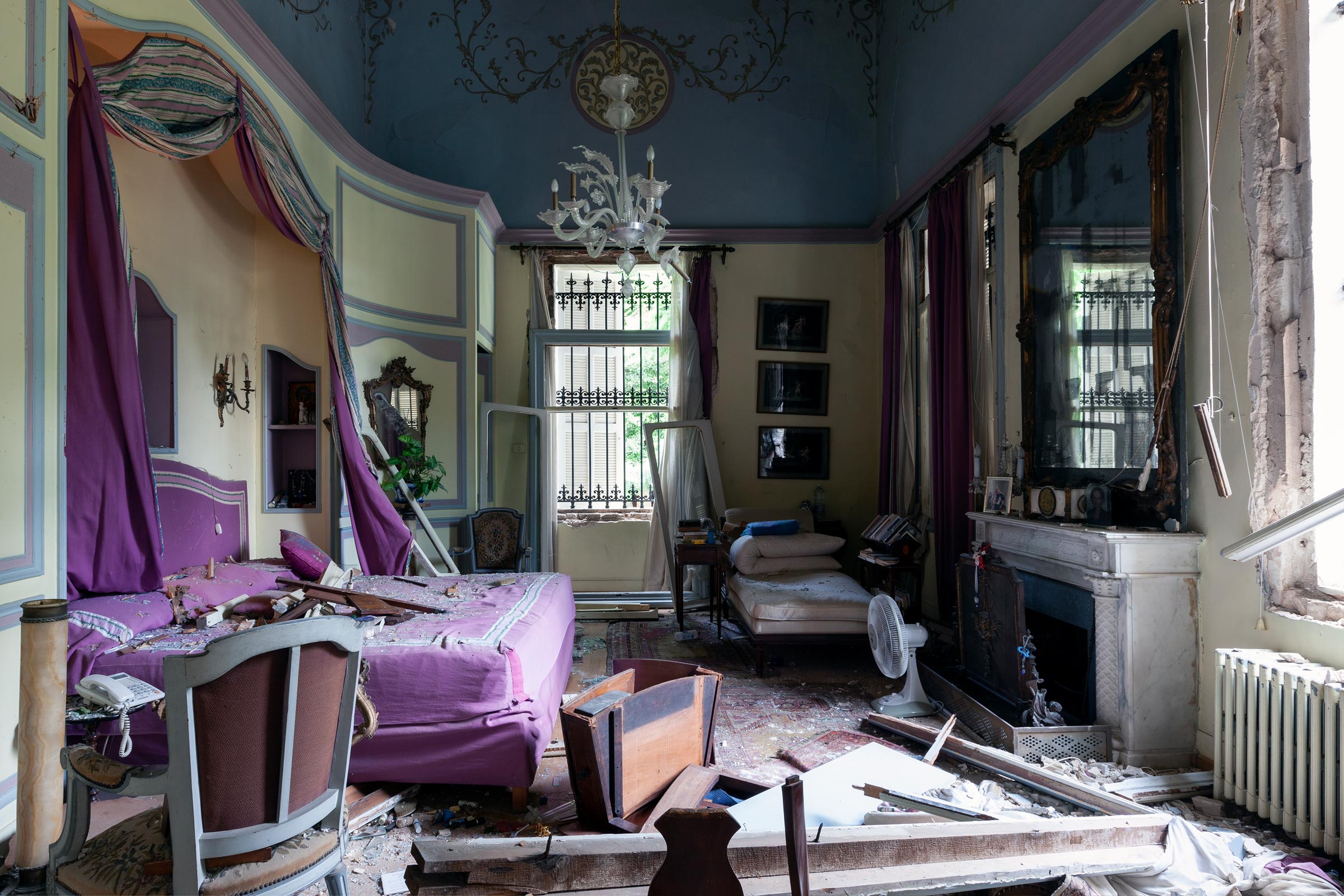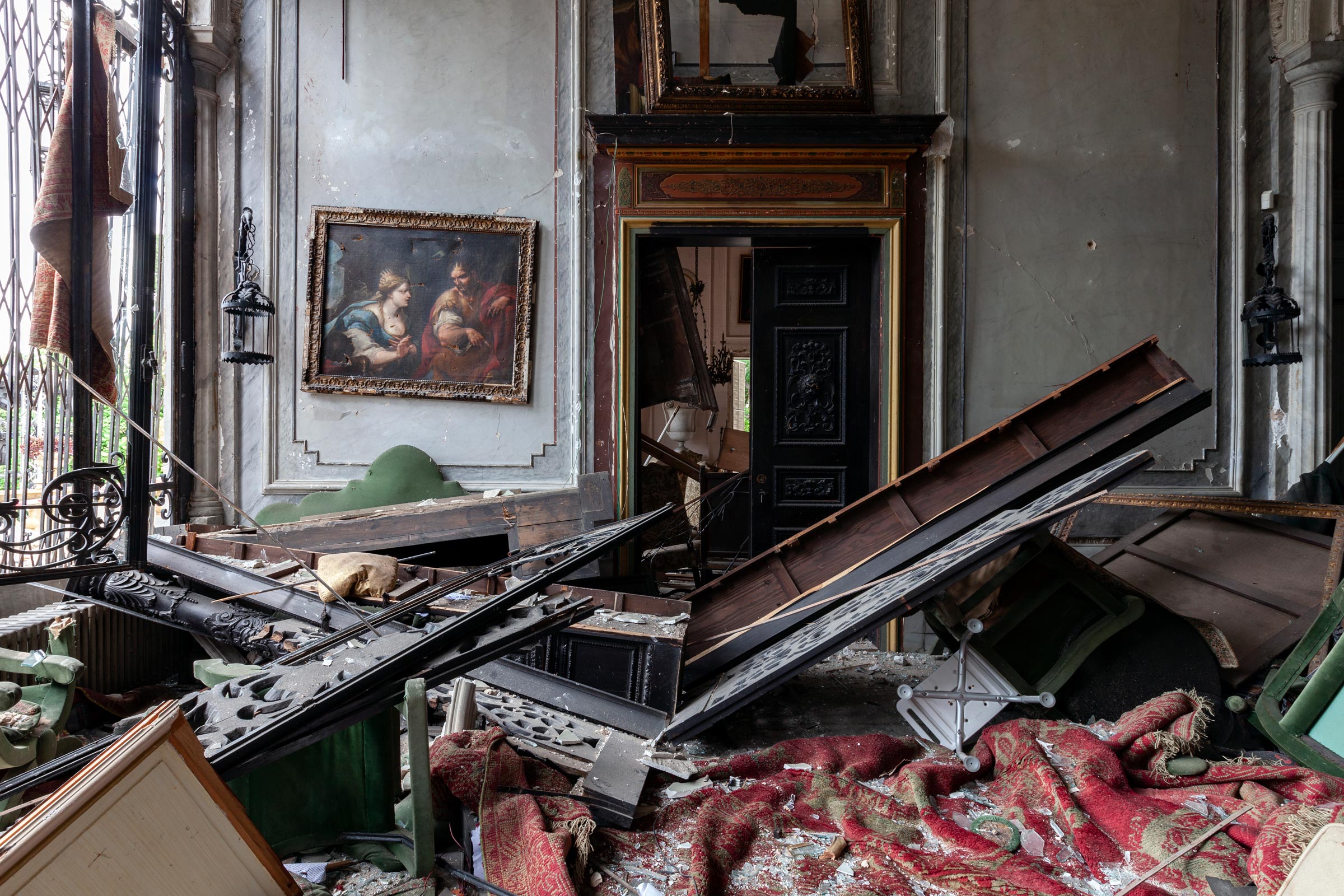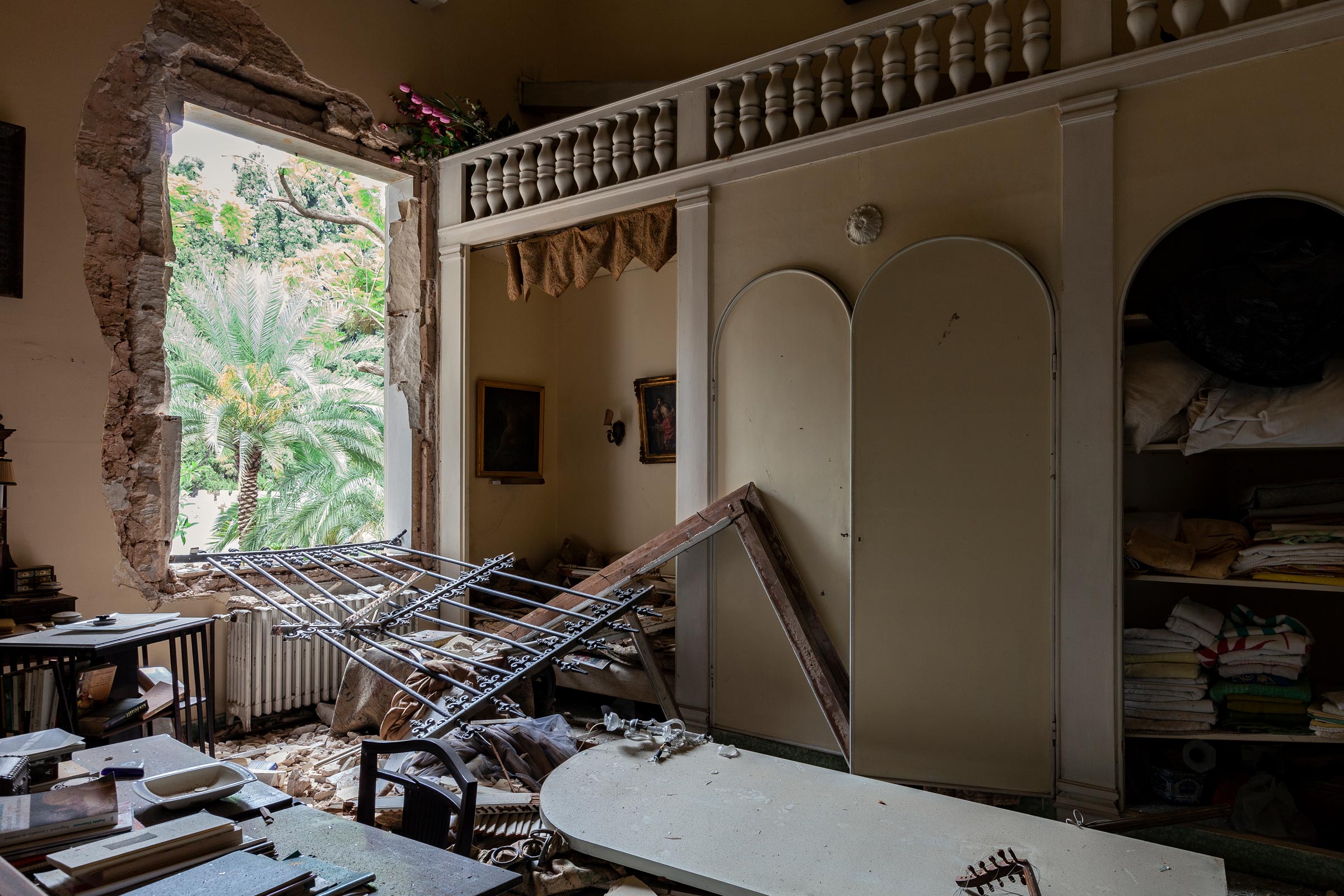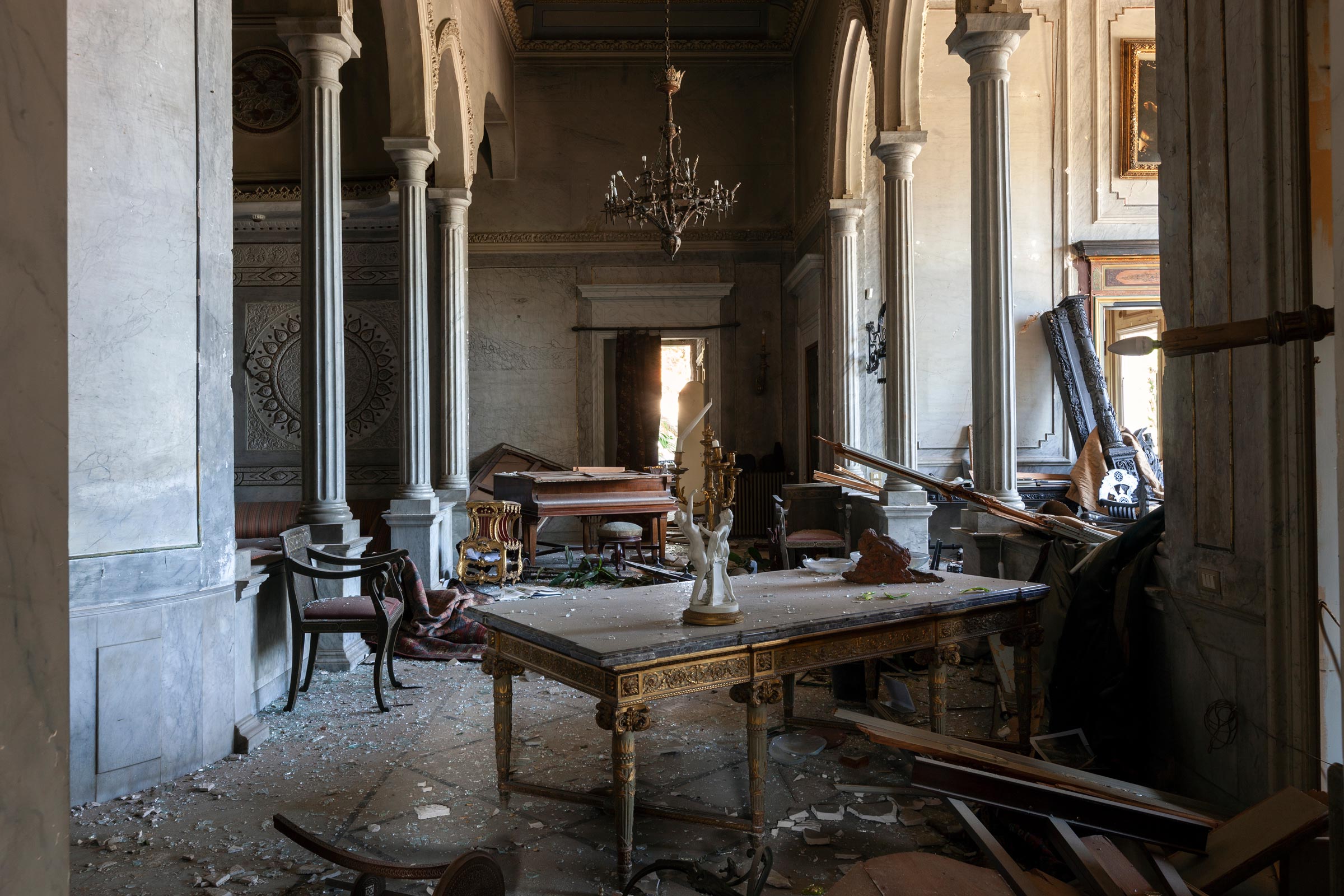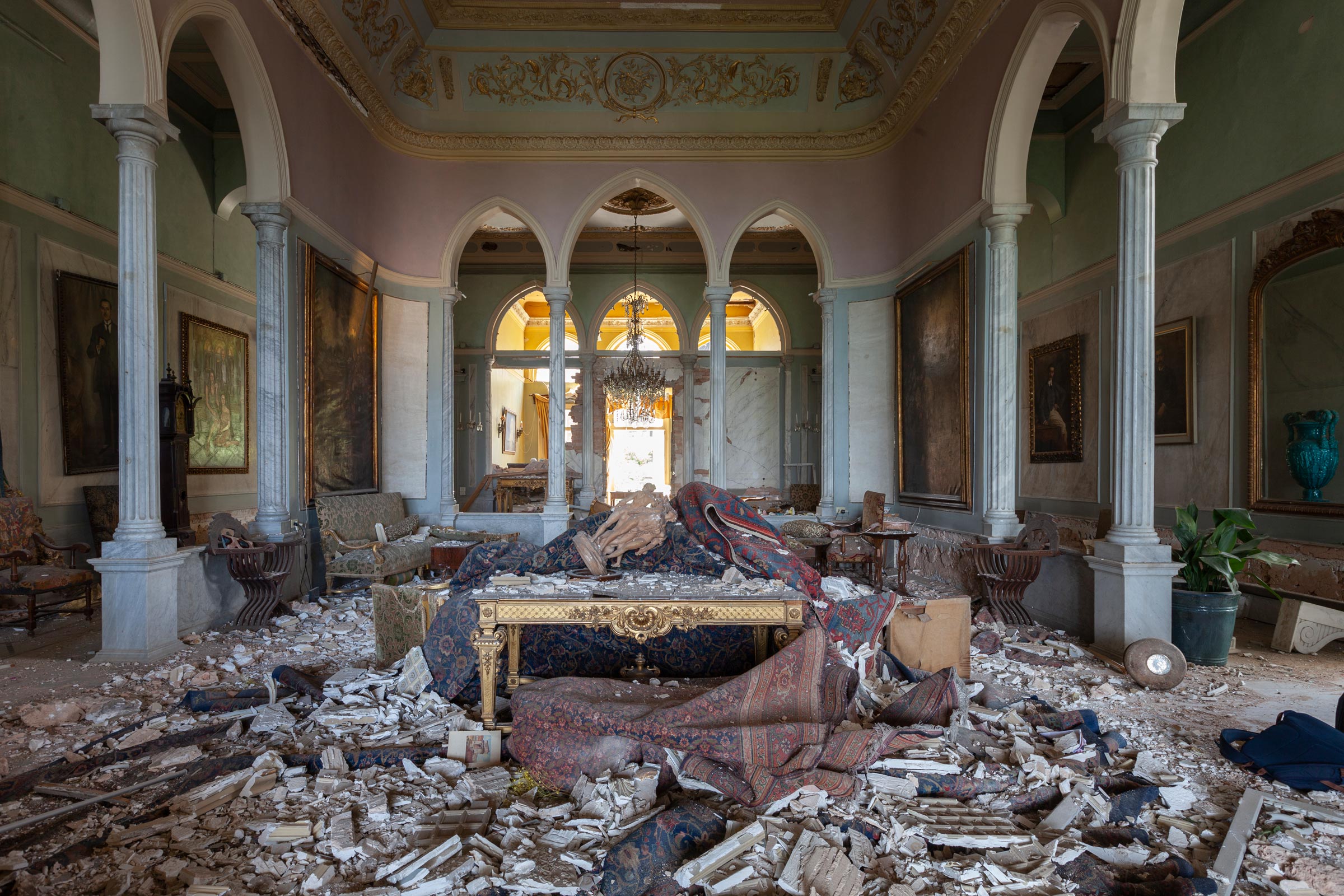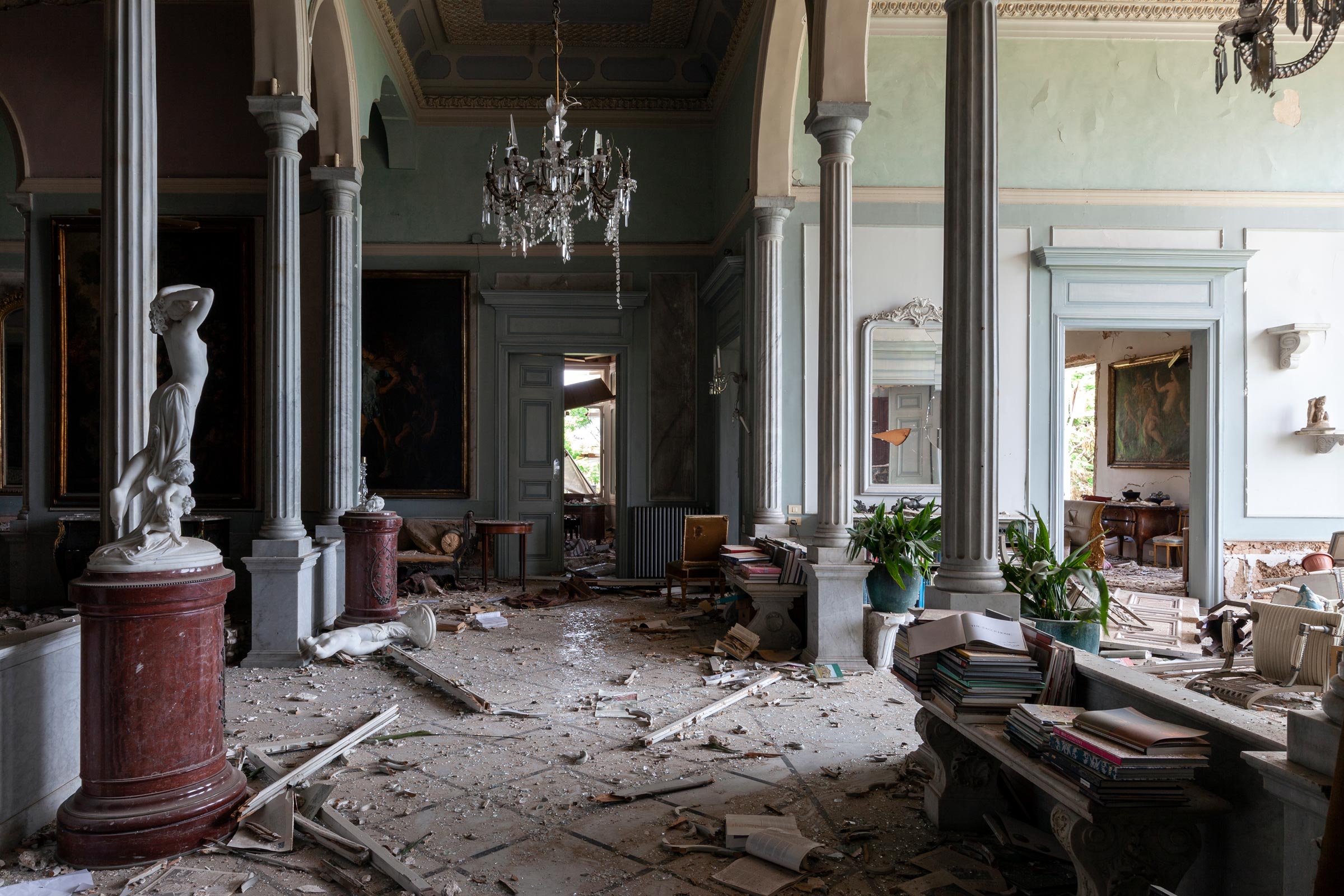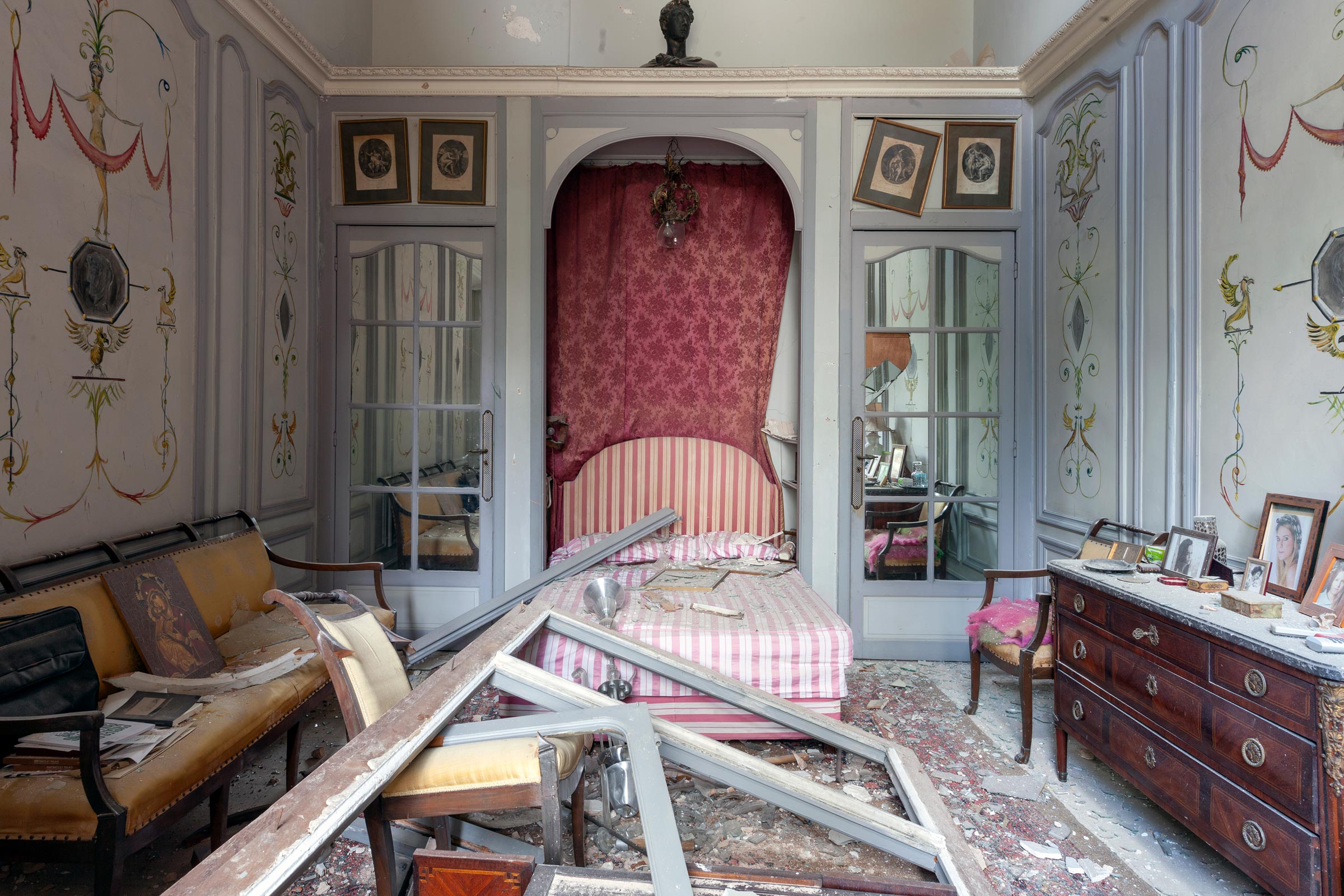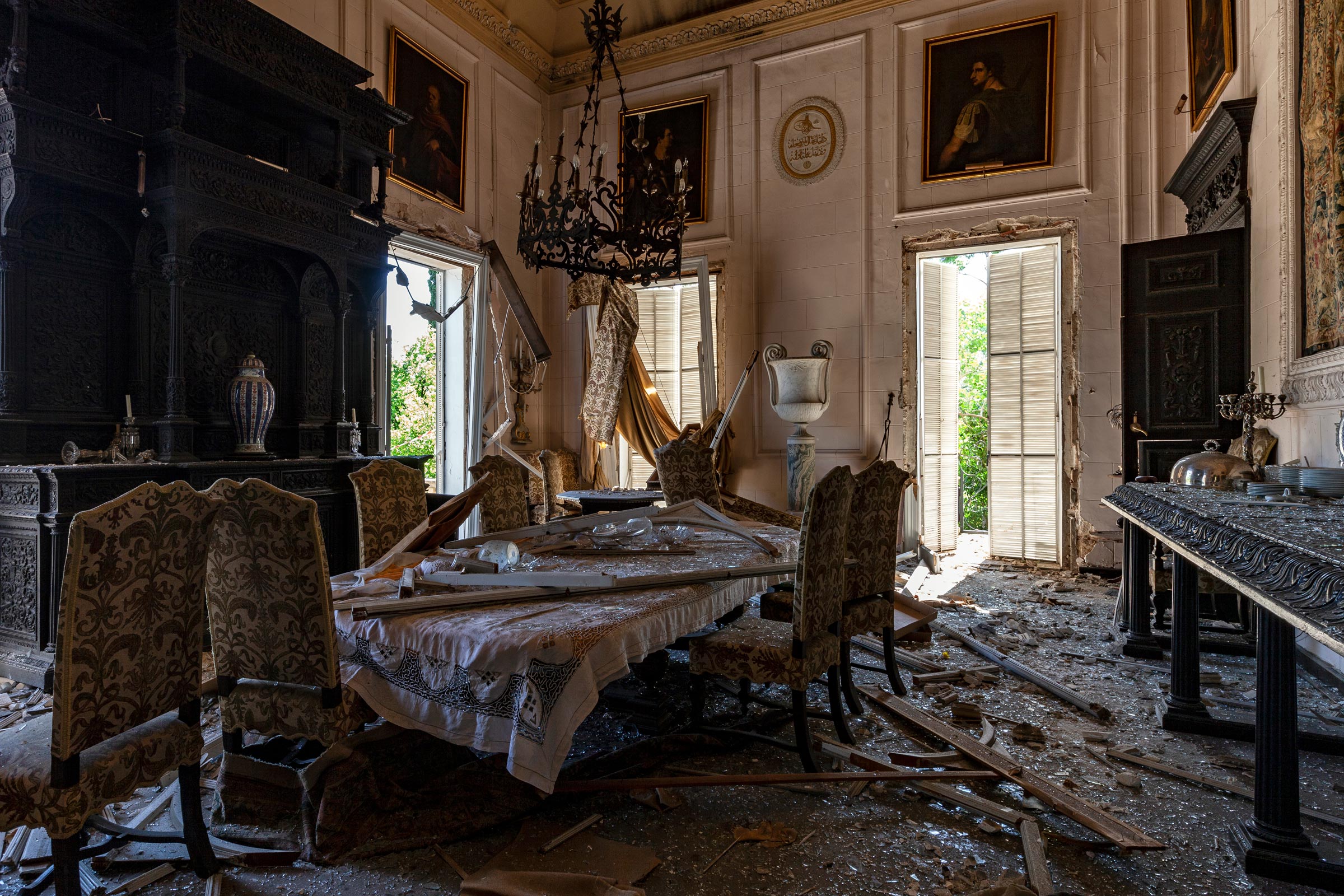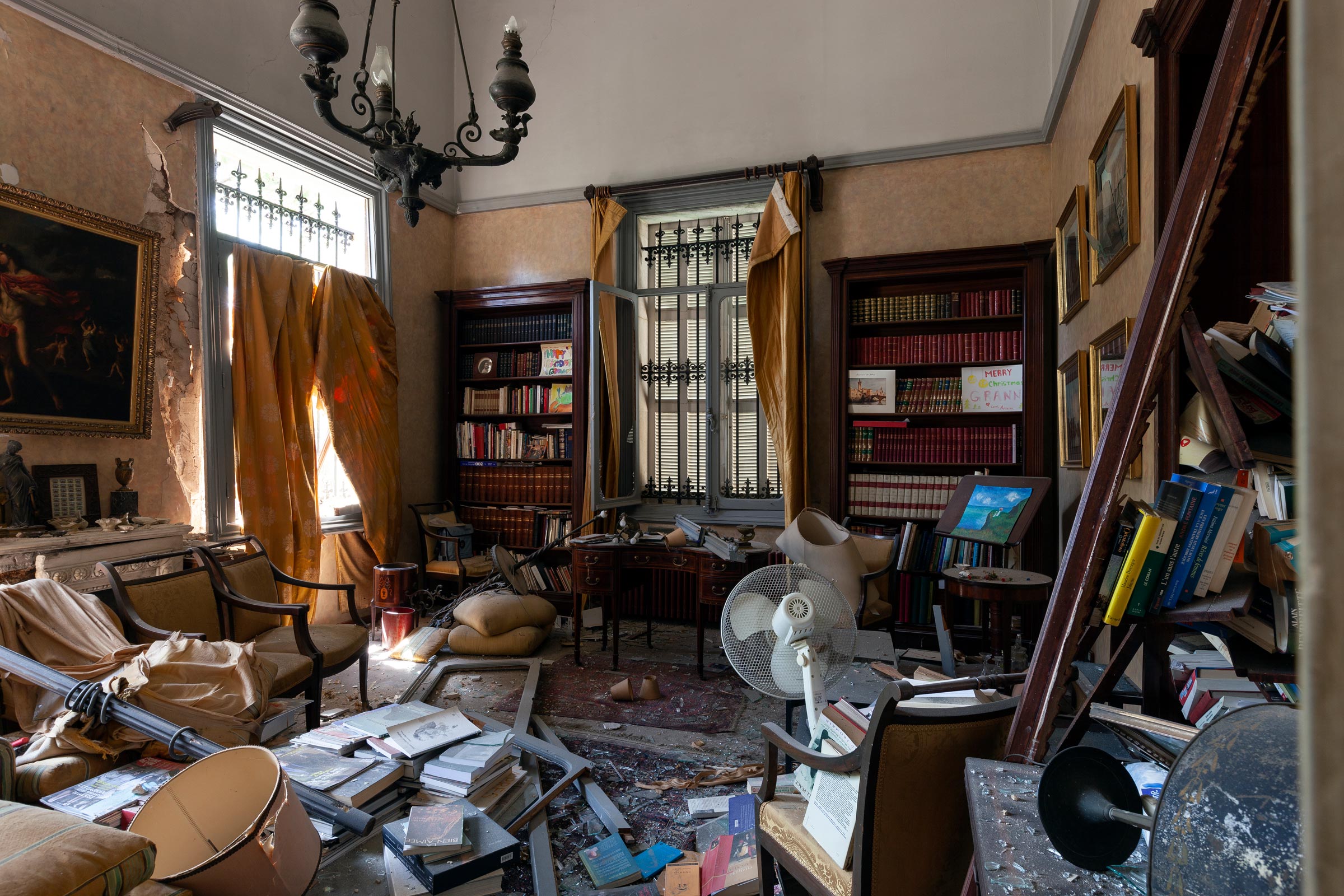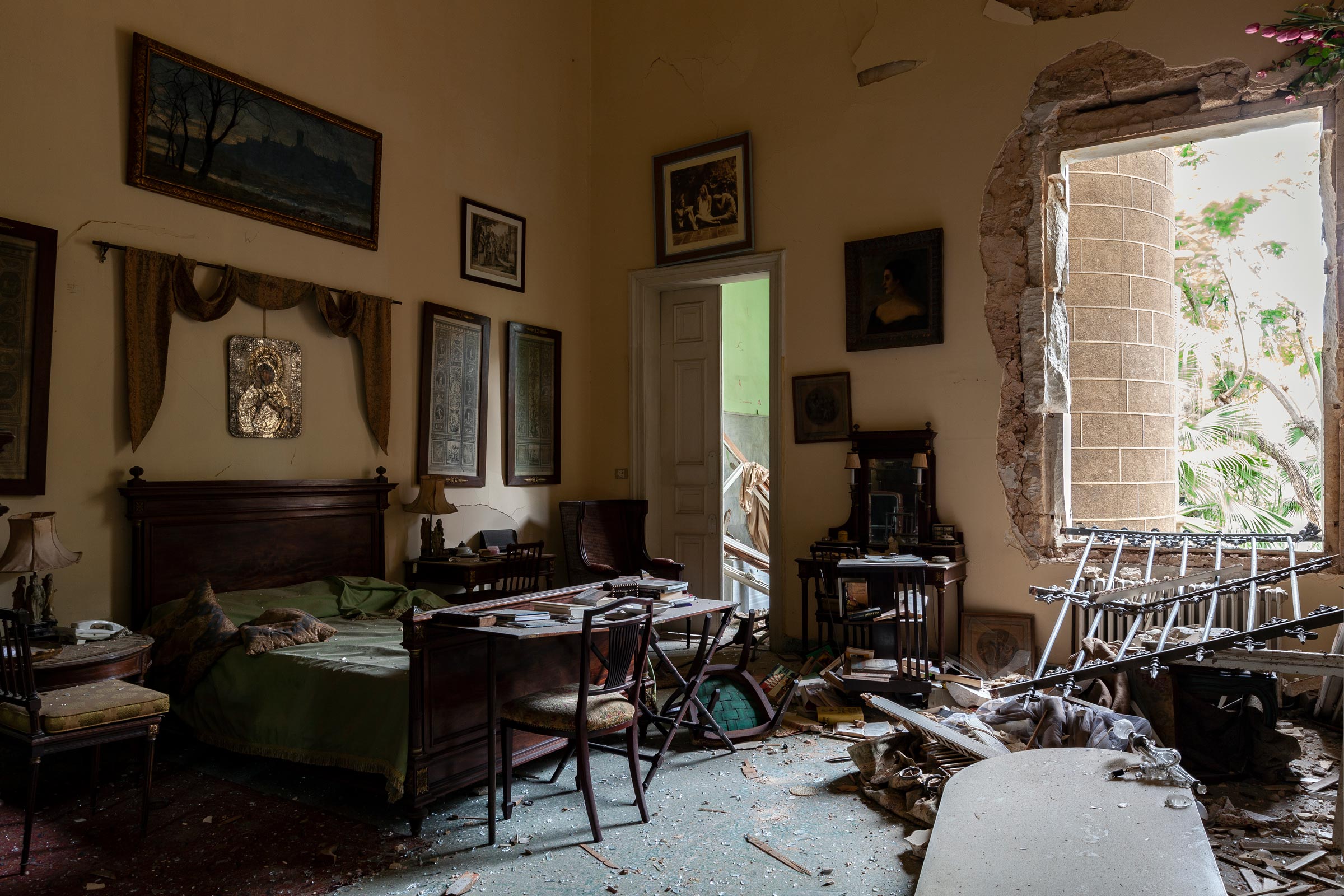Le Palais Sursock A Record of Destruction
Beirut
2020
On 4 August 2020, 2,750 tonnes of ammonium nitrate stored at the port of the city of Beirut exploded, causing at least 204 deaths, 6500 injuries and left an estimated 300,000 people homeless.
The blast was felt in Turkey, Syria, Israel and Palestine. It was heard in Cyprus, more than 240 km (150 mi) away. It is considered one of the most powerful non-nuclear explosions in history.
The explosion overturned cars and stripped steel-framed buildings of their cladding. Windows and other installations of glass across the city were shattered. Homes as far as 10 kilometres (6 miles) away were damaged by the blast.
The grain silos were largely destroyed, exacerbating food shortages caused by the COVID-19 pandemic and a severe financial crisis. Fortunately, part of the silos' sturdy structure survived, shielding a large area of western Beirut from greater destruction.
The historical neighbourhoods of Mar Mikhael, Gemayzeh and Achrafieh suffered significant damage as these areas faced the port. The Sursock Palace is positioned on top of a hill in the Sursock Quartier of Achrafieh with direct and undisrupted views of the port.
The Sursock Palace was built in 1860 by Moise Sursock, a Greek Orthodox Christian from Constantinople, and is home to beautiful works of art, Ottoman-era furniture, marble and paintings from Italy, collected by three long-lasting generations of the Sursock family.
The three-story mansion with its spacious garden is a Beirut landmark and has been admired and written about by many including those who visit the nearby Sursock Museum, also badly damaged in the explosion.
In a split second, everything was destroyed. The explosion resulted in significant structural damage. Roofs collapsed, windows and shutters were shattered, thick masonry cracked, plaster from ornate ceilings formed mounds of debris on the floor below, bronze metalwork lay twisted and contorted.
Antique furniture collected over generations was splintered, statues decapitated, and canvases slashed by flying glass. Objects, heirlooms, books and letters lay strewn amongst the debris.
This photographic journal records the unfortunate destruction of one Lebanon’s most revered and iconic structures from a disaster than many believe could have been avoided.
Lady Yvonne Sursock Cochrane, often referred to as the Jeanne d’Arc of Lebanon’s cultural heritage, was hurled from the palace terrace as she took tea with friends. She was taken to a hospital in the mountains but lost her battle to recover. She died on the 31st August from her injuries, aged 98.
>Image Credits: Alex Cochrane
